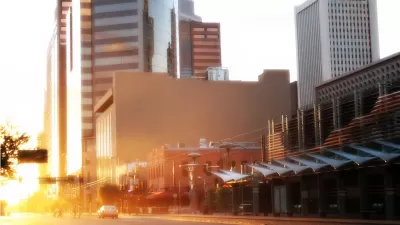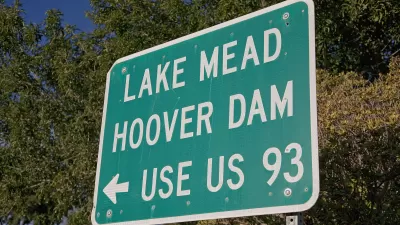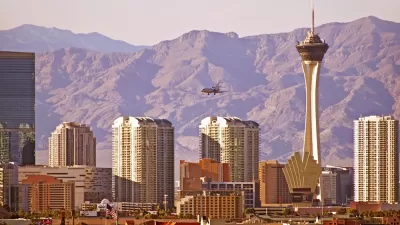As the number of excessive heat days steadily increases, cities face a range of new challenges. But they are also trying to get ahead of the problem while they still can.

Cities across the Southwest are now regularly facing sweltering heat conditions. Many areas contend with days on end of temperatures over 100 degrees, with serious consequences. “Such relentless, triple-digit temperatures — the equivalent danger of rising seas in many coastal communities — are straining power grids, buckling roads, grounding planes and endangering lives,” report Robert Moore and Katherine Davis-Young.
Moore and Davis-Young explain that urban areas are particularly vulnerable to the effects of extreme heat:
The issues are particularly pronounced in the Southwest’s largest metropolitan areas given the “heat island” effect caused by pavement and construction, which reflect heat instead of allowing it to be absorbed into the ground. As a result, temperatures are often several degrees warmer than those outside the city — and sometimes more than 20 degrees warmer at night.
Experts predict that these weather conditions will only continue to worsen. In response, cities are working to mitigate the challenges brought on by the hot weather. Los Angeles, for example, has put into place “cool roofing” requirements and has also used pavement treatments designed to lower the surface temperatures of streets. Phoenix similarly launched a Cool Roofs initiative in 2013. In addition, the city developed a tree-shade master plan, and it has a HeatReady program in the works to help the city prepare for and respond to urban heat dangers.
While cities in the heat belt work proactively to take measures, many still face challenges. “Bureaucracies are slow to innovate. Cost-sensitive developers are reluctant to take steps that could add to the price of new construction,” say Moore and Davis-Young. But one of the greatest hurdles is “community inertia,” when people get used to changing conditions and the effects on their quality of life.
FULL STORY: As temperatures keep trending up, ‘heat belt’ cities maneuver to stay livable

Maui's Vacation Rental Debate Turns Ugly
Verbal attacks, misinformation campaigns and fistfights plague a high-stakes debate to convert thousands of vacation rentals into long-term housing.

Planetizen Federal Action Tracker
A weekly monitor of how Trump’s orders and actions are impacting planners and planning in America.

San Francisco Suspends Traffic Calming Amidst Record Deaths
Citing “a challenging fiscal landscape,” the city will cease the program on the heels of 42 traffic deaths, including 24 pedestrians.

Half of Post-Fire Altadena Home Sales Were to Corporations
Large investors are quietly buying up dozens of properties in Altadena, California, where a devastating wildfire destroyed more than 6,000 homes in January.

Opinion: What San Francisco’s Proposed ‘Family Zoning’ Could Really Mean
Mayor Lurie is using ‘family zoning’ to encourage denser development and upzoning — but could the concept actually foster community and more human-scale public spaces?

Jacksonville Launches First Autonomous Transit Shuttle in US
A fleet of 14 fully autonomous vehicles will serve a 3.5-mile downtown Jacksonville route with 12 stops.
Urban Design for Planners 1: Software Tools
This six-course series explores essential urban design concepts using open source software and equips planners with the tools they need to participate fully in the urban design process.
Planning for Universal Design
Learn the tools for implementing Universal Design in planning regulations.
Gallatin County Department of Planning & Community Development
Heyer Gruel & Associates PA
JM Goldson LLC
City of Camden Redevelopment Agency
City of Astoria
Transportation Research & Education Center (TREC) at Portland State University
Jefferson Parish Government
Camden Redevelopment Agency
City of Claremont





























